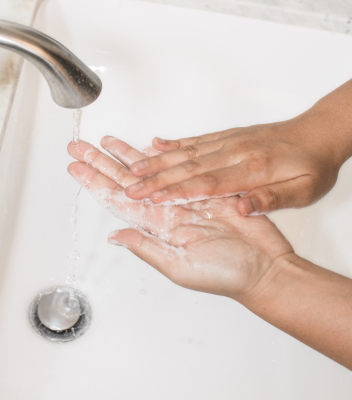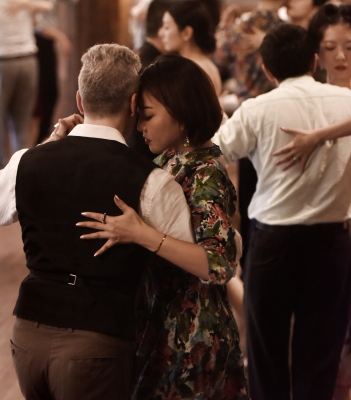There is a lot of sensationalist information around regarding the COVID-19 coronavirus right now, so I went looking for more credible data. I found it.
For my fellow dance lovers in particular, but really for all of my readers, this is the super-summary of what you need to know about COVID-19 according to the Joint Mission of the World Health Organization and the People’s Republic of China:
What is it?
COVID-19 is not influenza. It’s a new and novel coronavirus.
It’s highly contagious and spreads remarkably quickly.
What are the symptoms?
- Fever (90% of cases)
- Dry cough (70% of cases)
- Fatigue (40% of cases)
- Coughing up mucus (30% of cases)
Other typical viral symptoms such as aches and pains, sore throat, headache, chills, nausea, and stuffy nose, seem to be individual and less common. Runny nose is not a symptom of COVID-19.
How dangerous is it?
The vast majority of those infected so far have survived.
80% of cases have been mild, 14% severe, and 6% critical.
Risk of death is strongly associated with age, pre-existing health conditions and gender, and therefore ranges from extremely low to quite high:
- Infection is extremely rare in children age 0-9. No deaths have been recorded.
- In adults under 50, of those infected 99.7% will survive. (That is, 1 in 330 cases will die, though these probably have co-morbid conditions – see the last point below.)
- Over the age of 50 infection rates and risk of death (mortality) both take a step up. This age group comprises only 32% of the population but has 53% of the infections. Of infected 50-59 year-olds, 1.3% may die. This increases to 15% of those infected in the 80+ age group. (But again, see below.)
- Once infected, men are 70% more likely to die than women.
- Cardiovascular disease is the riskiest associated condition, raising the death rate among those infected to 13%, followed by high blood sugar (9%), and high blood pressure (8%).
Reference: WHO & PRC Joint Mission task force report, February 2020. These data are from the Chinese mainland. The virus might express differently in other locations or populations, or at other times. Figures have been rounded.
There are almost certainly other relevant variables that cannot easily be measured, like nutrition and healthy habits. It is reasonable to expect that active people who eat well and generally take care of their wellbeing will have better resistance to the worst effects.
How to reduce your infection risk

A large majority of cases in China arose in families, transmitted by close contact. This is because touching an infected person’s hands or face, or touching something that they have touched, coughed or sneezed on, can transfer the virus to your skin. COVID-19 has been shown to persist on objects and surfaces for over a week.
Thankfully, viruses can be reliably washed off by ordinary but thorough hand-washing. Hand-sanitisers formulated with alcohol are also effective. So wash or sanitise your hands frequently, especially when you have been in places where many people have touched the same objects or surfaces, such as trains or buses.
Viruses infect very easily via the eyes or mucus membranes, so don’t touch your eyes, nose or mouth with unwashed hands. (Easier said than done, as we touch our faces about 20 times per hour! Be self-aware.)
Dances with COVID-19
Partner dances like Contact Improv and Tango are a haven for communicable infections. It only takes one person to attend class with a cold and many of the group will go home with it.

In my local area, the Northern Beaches of Sydney, Australia, Contact Improvisation & Embodiment classes* are about to start up again after a break. Long before Coronavirus hit the news I decided that classes I facilitate will have a strict no-attendance policy for anyone with the slightest suspicion of being unwell.
This is partly because I am a very, very grumpy and resentful sick person, but also because I want our local classes to be safe havens. I want CI dancers to feel they can attend with absolute confidence.
Even though COVID-19 is rare here, I plan to be extra strict in enforcing this rule. With the tiniest suspicion of a temperature, cough, stuffy nose or sore throat, please don’t come! We love you and will miss you, but we will love you so much more in two weeks. 😉
Lovers of contact-based dance elsewhere, consider sticking to classes in your local area where your classmates are known to you, and applying the same rule. Or if too many infections have been reported nearby, put classes on hold until the problem passes.
Personally, I would not be attending contact dance events in tourist destinations at the moment, no matter how appealing.
At the best of times it’s only just manageable to have a multitude of strangers from different parts of the world swapping germs over large areas of skin. Right now, it seems like an exceedingly bad idea! Just one person with COVID-19 could spread it quickly through dozens of people.
Dance styles such as Salsa, which involve mainly hand-to-hand contact, might be slightly safer. Hand-washing and sanitiser should, in theory, greatly reduce infection risk. Still, no-one ever wants to dance with someone who is snuffling, feverish, or wearing a face-mask, so the same rules should apply. Whilst I really do understand your love of Tango/Zouk/Salsa and your great sorrow at missing a milonga, please don’t attend!
Wait until you feel completely better… then wait three more days… then come on down.
Thank you. 🙂
*For more information about Contact Improv classes and jams, Sydney North, keep an eye here: Conscious Movement, Dance and Embodiment
Many thanks, this website is really handy.
Amazing, this is a good site.
Thank you https://shrinkwrap.blog for informing us!
The world is having a hard time with this pandemic.
However, there is hope.
Good health to all!